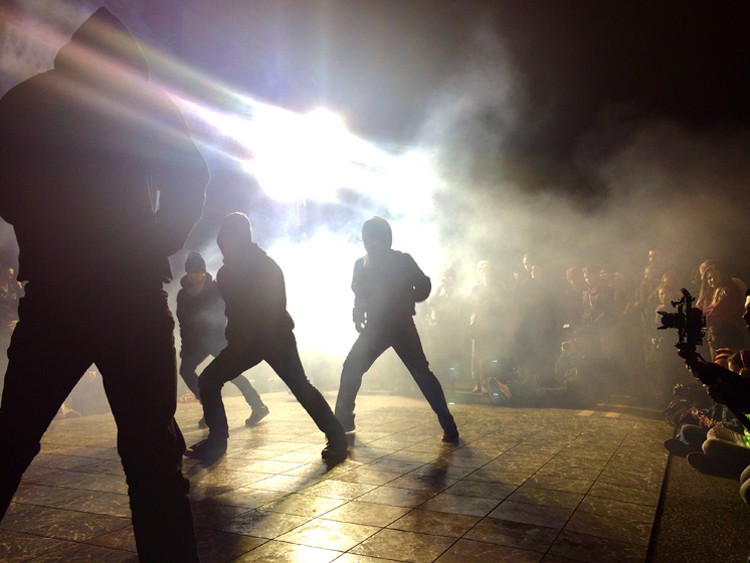In preparation for his upcoming performance in Dupont Circle, The Phillips Collection asks performance artist Jefferson Pinder questions about the event and his work at large.
What is your creative process like?
JP: My creative process is like a whirlwind. I’m gradually accumulating materials and ideas based on what I see and hear. I begin to make abstract and bizarre connections related to the world around me. I’m a passionate person and I have an urge to interact with things that inspire me. Images, music, people…I started my career working on collage and to this day I still consider that to be a part of my creative practice. I’m constantly attempting to put things together that might not completely match-up. That’s the challenge and inspiration for a lot of the work that I do.
What themes do you most often pursue?
JP: Most often I’m pursuing themes that deal with the black body. I come from a theatre background and I’ve learned over time how political the “black body” is in our society, so most of my work deals with conversations associated with this.
You’re also performing Dark Matter(s) at the Driskell Center the evening before your Dupont Circle performance. How do you feel the space will (or will not) change the experience?
JP: Since the Dupont Circle environment is open, I hope that we will attract a crowd of people that are not expecting to see performance art in that location. The piece was designed to be performed outdoors, so I think onlookers will be surprised to see stylized, socially-conscious breakdancing in Dupont Circle. This brings the performance to the people. I don’t know how often The Phillips Collection has the opportunity to communicate with the public this way.
What is most challenging about being a performance artist?
JP: With a project like this there are logistical challenges. Directing seven professional dancers to speak as one is a challenge as well. The B-boy spirit is a strong and independent force. Working together politically is a new paradigm. Most people believe that an artistic practice involves solitude, paint brushes, a moody spirit…for a performance artist who works collaboratively the challenge is to work successfully with other talent. To be able to step aside and understand that my selected performers are the best people to execute my vision is tough. Sometimes you want to believe that your practice is all your own, but for me, I am the director in this piece. I am the impresario of sorts—making sure everything happens the way I want it to, the way it needs to happen. I think a lot of folks don’t understand the complexity of an endeavor such as this; we will walk a tightrope between being didactic and entertaining. Hopefully we will find the poetry that lies in between.
How do you think your performance speaks to the DC community?
JP: I don’t know exactly how my work will speak specifically to the DC community, but for as long as I can remember, I don’t think anything quite like this has been done in Dupont Circle. Obviously there are political undertones that DC is constantly dealing with regarding race and class, but my focus is making a work that speaks to the physicality of uprisings. In general, I think artists can only be responsible for making good work. How it resonates will depend on who shows up and how the performance plays out. This is my focus. I want to be sure that all of the performers are giving their all and that the environment is right for an amazing piece.

